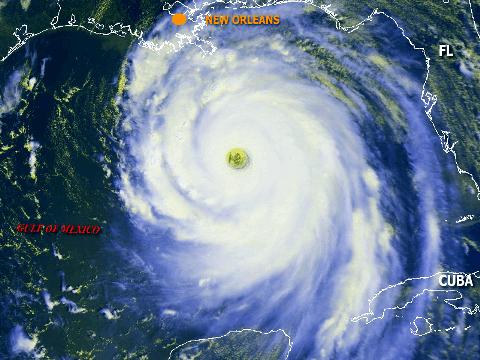Squarethecircle wrote:Honeyko wrote:These look a lot alike to me (Katrina vs. Isabel):Squarethecircle wrote:...Katrina wasn't close to being annular).
Katrina and Isabel have about the same CDO vs eye-size ratio (Katrina actually has the larger eye, relatively). I disagree with the notion that the presence of rainbands excludes a hurricane from consideration of being annular -- very few areas have an oceanic heat-content as extreme as the GOM loop-current. Note that Katrina easily meets all of the other annular characteristics.Katrina steady-stated at 160+mph with a giant eye for twelve or more hours prior to continental air intrusion:wxmann_91 wrote:However, Katrina was nowhere near its maximum intensity possible, which was around 850 mb or something outrageous like that according to Dr. Emmanuel's MPI formula. I wouldn't really put Isabel and Katrina in the same category; while Isabel was steady "maxi-state", Katrina was hindered a bit by dry continental air in the vicinity, which inevitably led to the inner core near-collapse near landfall.
19 25.20 -86.70 08/28/06Z 125 930 HURRICANE-4
20 25.70 -87.70 08/28/12Z 145 909 HURRICANE-5
21 26.30 -88.60 08/28/18Z 150 902 HURRICANE-5
22 27.20 -89.20 08/29/00Z 140 905 HURRICANE-5
23 28.20 -89.60 08/29/06Z 125 913 HURRICANE-4
But it had lots and lots of rainbands.
That's what an annular hurricane is - part of the definition. You can't decide to change that - it's not up to you.
Theres no reasoning with people who like to make up their own facts STC, stop wasting your time.

















